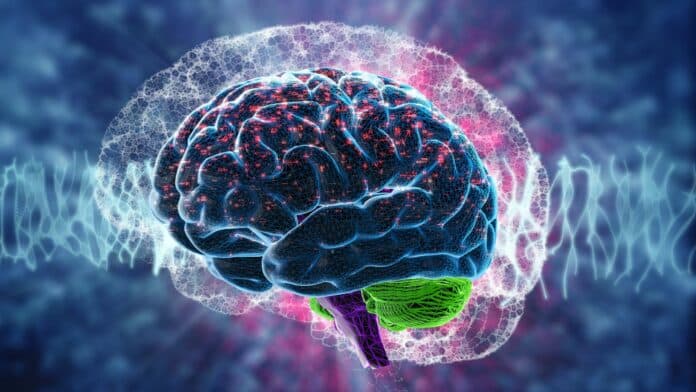The human brain needs an uninterrupted supply of oxygen to maintain its various functions. That’s why the brain has a network of delicate blood vessels that transport oxygen molecules to brain cells.
A crucial indicator of brain activity is the cerebral metabolic rate of oxygen consumption (CMRO2), which shows how much energy the brain uses at any given moment. Since CMRO2 is an essential indicator of tissue pathology under steady-state conditions such as those brought on by cancer, traumatic brain injury, and stroke, direct quantification of CMRO2 is an essential goal in neurology. Additionally, its dynamic monitoring during neuronal activity can shed light on the metabolic mechanisms that underlie the functional responses of the brain.
Although some current methods need to provide information about the relative timing of metabolic events and vascular responses. Researchers from the University of Pennsylvania created a novel optical approach to understand CMRO2 during brain activity better. This method uses two macromolecular phosphorescent probes successfully used for real-time CMRO2 and cerebral blood flow (CBF) monitoring in a preclinical animal model.
The method directly measures the oxygen gradient in the brain. The oxygen gradient is determined by the differential in oxygen concentrations between the blood arteries of the brain (intravascular) and the area surrounding the brain cells (extravascular). This gradient becomes steeper as brain cells become more metabolically active and require more oxygen. Thus, the CMRO2 may be calculated using this gradient, which also contains information about the amount of oxygen utilized.
Prof. Sergei A. Vinogradov, the study’s principal investigator, said, “Most current approaches for dynamic tracking of CMRO2 are based on measurements of hemoglobin oxygen saturation and CBF, such that CMRO2 dynamics becomes inherently tied to the dynamics of CBF. We wanted to develop a method free of this limitation.”
The crucial step was finding a method to gauge the difference between extravascular and intravascular oxygen levels simultaneously. One phosphorescent probe called Oxyphor PtR4 was inserted into the blood, and Oxyphor PtG4 was given directly into the area between the blood vessels. Because the two Oxyphors have different colors, the team could concurrently measure the signals from both probes with a temporal resolution of 7 Hz by utilizing two distinct lasers.
They demonstrated real-time computation and tracking of CMRO2 during functional brain stimulation using the method on a preclinical model. The researchers also successfully measured CBF simultaneously with CMRO2 using a third laser and a technique known as laser speckle contrast imaging.
Prof. Sergei A. Vinogradov, the study’s principal investigator, said, “Most current approaches for dynamic tracking of CMRO2 are based on measurements of hemoglobin oxygen saturation and CBF, such that CMRO2 dynamics becomes inherently tied to the dynamics of CBF. We wanted to develop a method free of this limitation.”
Associate Editor Prof. Andy Shih, a principal investigator at Seattle Children’s Research Institute’s Center for Developmental Biology and Regenerative Medicine, said, “This clever development and use of probe pairs in the intra- and extravascular compartments opens the door to measurements of brain oxygen consumption.”
Prof. Arjun Yodh, the other corresponding author of the study, explained, “Our scheme offers an opportunity to observe changes in brain metabolism in real-time directly and to concurrently compare vascular responses to metabolism responses. As technology develops, we anticipate that the method will become more broadly available for testing drugs and other effectors of brain metabolism. It should permit more rigorous examination of metabolism models.”
Journal Reference:
- S. H. Chong et al., “Real-time tracking of brain oxygen gradients and blood flow during functional activation,” Neurophotonics 9(4), 045006 (2022), DOI: 10.1117/1.NPh.9.4.045006
